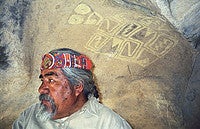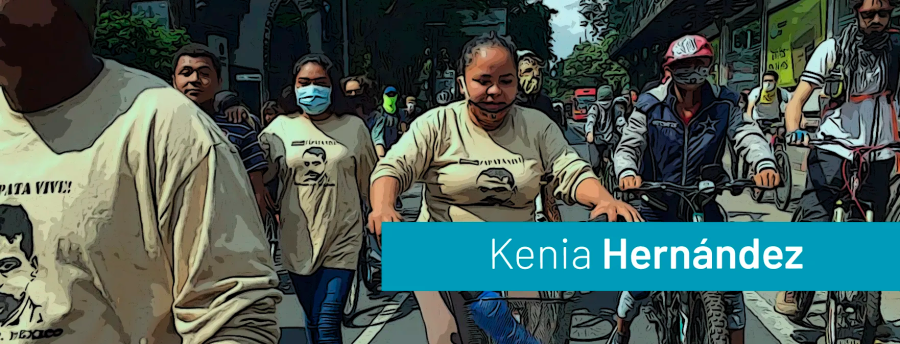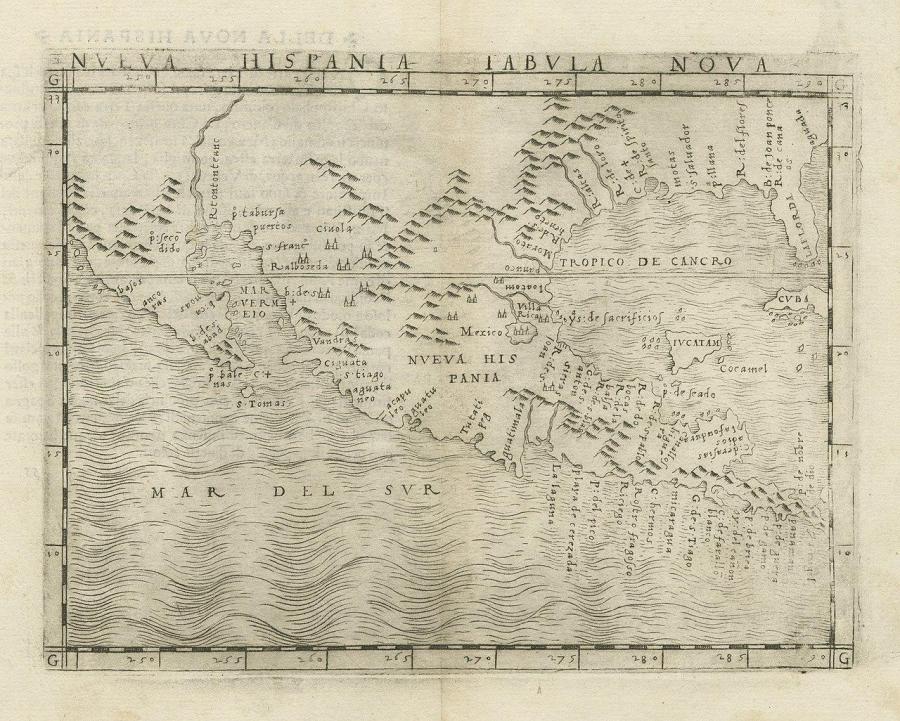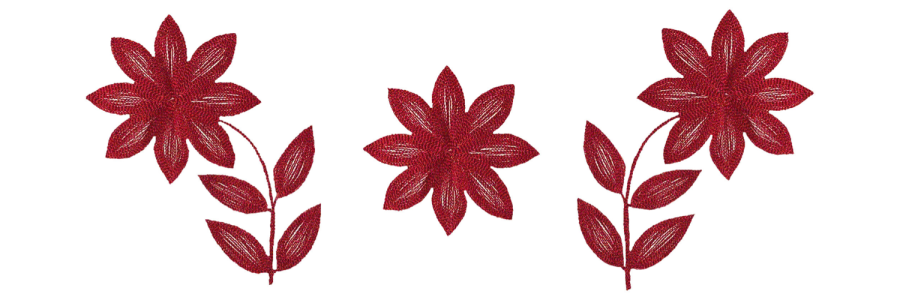Normally, our bodies are in balance. Though we begin life in balance, we lose that balance, our equilibrium, as time goes by. So medicine is used to bring us back to balance again.
How does the medicine restore our equilibrium? The people who are dedicated to healing are very sensitive. They are dedicated to healing because they care about people and want to help their communities. They differ from allopathic doctors in how they engage with their patients. While the allopathic doctor says to his or her patient, “We’re going to try this type of medicine and come back in two weeks,” and does not give much attention to the problems of the patient, the curandero asks “What hurts?” and engages in a dialogue. Today, allopathic medicine lacks a human component. Indigenous healers, however, listen to their patients. Patients really want someone to listen to what is wrong with them and the Indigenous doctors let them speak and ask them questions. The doctor says to the patient, “We’re going to work together. I will help you. Trust me. We are going to be together. You are not alone.” This way, a trust is established between the healer and the patient. This is using medicine of the mind. The curandero lets a patient talk and talk and, therefore, knows what he or she is thinking; he knows what the problem is. This is what is different about the medicine of the curandero.
 Tlakaelel at a rock marked with traditional symbols. Photos by Kay Sutherland.This is not all that is different, however. The healers also learn to feel the energy of the people. For example, we have a medicine called olympius, or the purification. During this practice, the healer uses a branch or flowers—paru, rosemary, basil—as well as copal smoke and incense. The healer passes the plants and smoke over the patient’s body. This forms an aura, or a projection of light, which allows the healer to recognize the patient’s energy. The healer can see where the energy is too much or too little and moves it around to leave the body balanced. The plants he uses in this practice have the ability to absorb energy. That being said, the medicine is just something to help—it is energy and strength. The body functions automatically and knows how to heal itself. Most medicine is just to clear a pathway so the body can heal itself, so it can comply with its obligation to repair itself.
Tlakaelel at a rock marked with traditional symbols. Photos by Kay Sutherland.This is not all that is different, however. The healers also learn to feel the energy of the people. For example, we have a medicine called olympius, or the purification. During this practice, the healer uses a branch or flowers—paru, rosemary, basil—as well as copal smoke and incense. The healer passes the plants and smoke over the patient’s body. This forms an aura, or a projection of light, which allows the healer to recognize the patient’s energy. The healer can see where the energy is too much or too little and moves it around to leave the body balanced. The plants he uses in this practice have the ability to absorb energy. That being said, the medicine is just something to help—it is energy and strength. The body functions automatically and knows how to heal itself. Most medicine is just to clear a pathway so the body can heal itself, so it can comply with its obligation to repair itself.
Medicine is not just about plants and remedies. It is also about energy—the energy of the sun. The sun is more than light and heat; it is also medicine. It creates and conserves light. The sun is the masculine aspect of creation and the earth is its feminine counterpart. The sun and Mother Earth come together, giving forth plants and trees, which create food. The trees give wood for our fires, and the fires light our temescals [sweat houses], facilitating our ceremonies. The heat of the stones in the temescal is derived from the heat the wood created. The origin of that wood is the sun. It is the heat of the sun that we use to purify when we heal. It is all connected. However, the most important aspect of this equation is the healer. It is the healer who organizes the sun, the plants, and all the energies around us and makes them into medicine.
The energy that our body creates—psychic energy—is received from space. It enters our body through our head and divides itself into two sections, the right and left hemisphere. The energy passes through the center of our body and controls the opposite side from which it enters. For example, the right-hand part of the brain controls the left-hand part of the body and vice versa. The energy creates an X, which crosses at our solar plexus and gives us psychic energy. One can take this energy and heal with it. When you heal someone, you are giving them energy. We pass energy to wherever the sick person is in pain. However, as stated before, the doctor is the medicine. That is why, in our Indigenous tradition, we have the medicine man. He is not a man of medicine. Rather he is the medicine. We all have this ability, the ability to use psychic energy through our solar plexus in order to help balance people. When a sick person comes to you, you must listen to what he or she says. Half of the healing process is being able to listen to the patient in order to learn the origin of the illness.
When someone has a terminal illness, a curandero can help him or her die in a positive way. When this is the case, I take the patient to the temescal, and there we talk. We talk about life, about childhood, the experiences of young people, and about love. When the patient is of old age, I say to them, “Do not worry; you have completed. You have complied with your destiny. You have done the most sacred thing a human being can do in the world: you have conserved the human species. And you have prepared the following generation so that they will continue good work.” When the patient is about to pass from the world I say, “Go ahead; you are not alone. I am here. I am your friend, I am your brother, I am your grandfather. Do not be afraid. The place where you are going to is beautiful. You are going to die but you are not going to disappear. There is a doorway to the next part of the path you are going to take.” This is true, and the patients feel this truth. Little by little they begin to relax. They get calm, have a smile on their lips, and then they go in a very beautiful way.
We can sum up Indigenous medicine in one, single word: love. Human solidarity, tolerance, understanding. People must know that we are all equal. We have a word, a great teaching: You are me, and I am you. Therefore, have compassion with me. We are not so different—we are all human beings. Solidarity. We must heal ourselves first before we can heal others.
But now we have a great problem: Mother Earth is sick. The earth is contaminated with poisonous chemicals; we have poisoned the water; there are enormous islands of trash floating in the ocean; and there is lots of pollution. As a result, the earth is protesting by refusing to produce in the natural way. This is a cyclical phenomenon. Every 12,000 years the earth goes through a purification process, which we are experiencing now. We have earthquakes, hurricanes, and great floods like the ones experienced in the south of Mexico annually. There are problems around the globe, in the United States, Europe, China, and India. Wherever you go there is a problem with natural disasters, which are closer together and stronger every year.
In an attempt to rectify this problem, world leaders met together several years ago in Kyoto, Japan. There, the majority of the world’s nations tried to find a way to heal Mother Earth, eventually signing the Kyoto Treaty. Yet, the most contaminated countries did not sign the agreement. They are now suffering the consequences. I know that soon, those who did not sign the Kyoto Treaty will be convinced that it is necessary to come together in order to help in some way.
In the meantime, those of us without money or power must exercise our consciousness. We have to do something. Therefore, I advise people to first take care of themselves. Heal yourself, and conduct a self-analysis. Ask yourself, “What has happened in my life?” In my community, we have a ceremony called the vision quest that is designed specifically for this purpose. During the vision quest, we ask ourselves, “Who am I? Where do I come from? Where am I? Where am I going?” This is part of medicine. Looking for peace inside helps us to be balanced as well as united with others. First we must have peace in our hearts, then we can project peace, love, and understanding. This is the medicine.
Love is the best medicine. When you pass energy to another person, you do so with love. You know it is your own energy that you are giving away, and you know that you are helping someone else. You are doing this because you have an obligation to help. This practice is not just medicinal for the patient, but for the provider as well because you know you are doing something positive. There are many ways to help people, and a healer must know these varied techniques. This is why healers are usually community elders who have had many experiences. But the most important thing is for people to have faith in the healer and faith in the medicine.
We are all in danger and we all have to wake up and help. We have to prepare ourselves by learning natural medicine, learning to understand food and its natural properties, and learning to recognize medicinal plants and where to find them. We are going to need to know how the flowers heal, and how the roots and leaves of the plants cure ailments. We must understand that we are a holistic species and that what happens in one place will affect another. That is the spirit of comprehension, the spirit of identity that we have to awaken in ourselves.
What can we do? Each one of us has to answer this question and decide to come together. If we do that, we will help our neighbors, and we will help ourselves. We will understand better that all of us are natives of this planet, whether for good or for bad.
Tlakaelel is a 78-year-old Mexica-Tolteca elder from Teotihuacan, Mexico. He gives lectures on Indigenous spirituality and healing all over the world. This article is adapted from a talk he gave at the Ringing Rocks Foundation in 2008.



